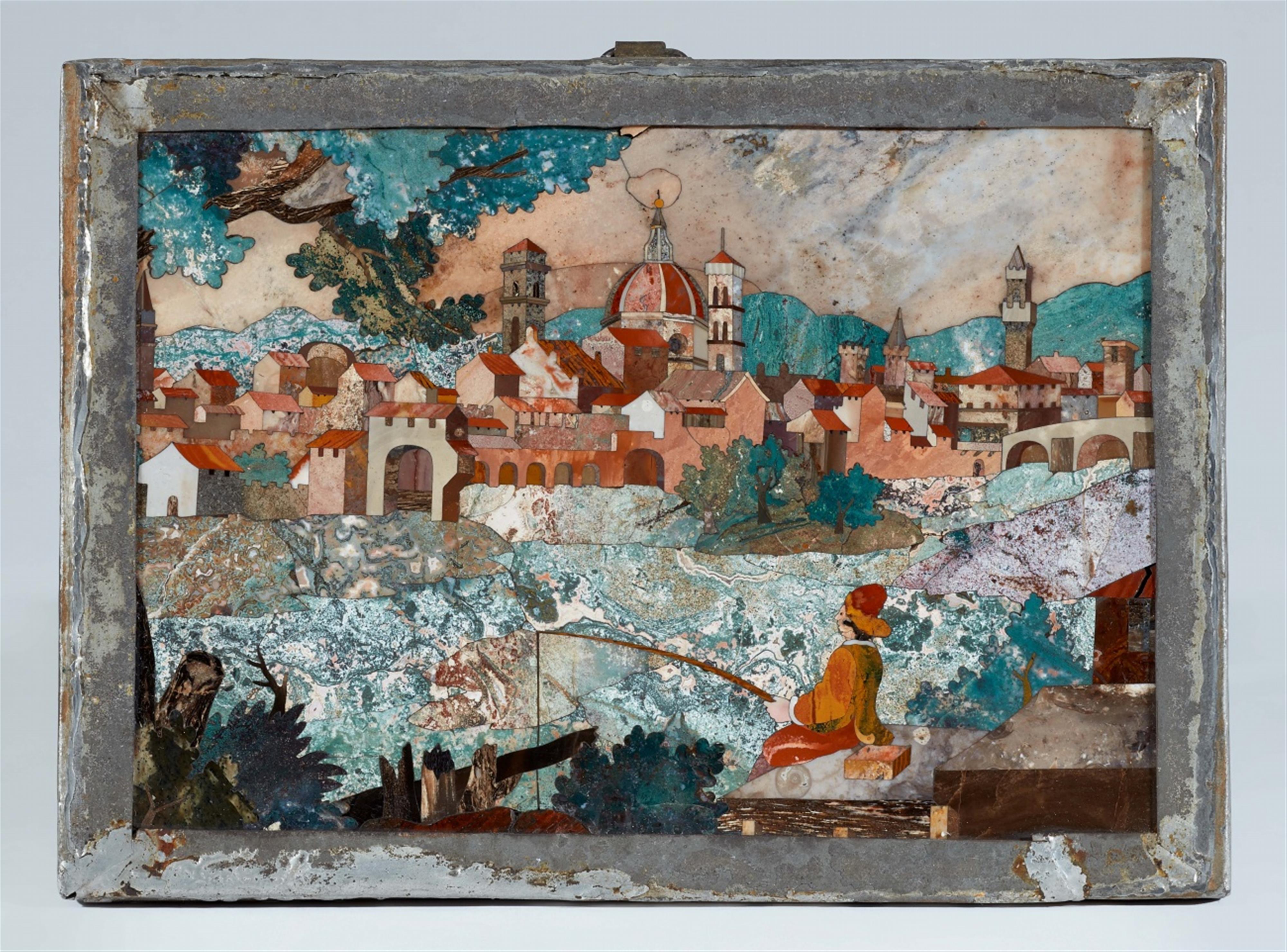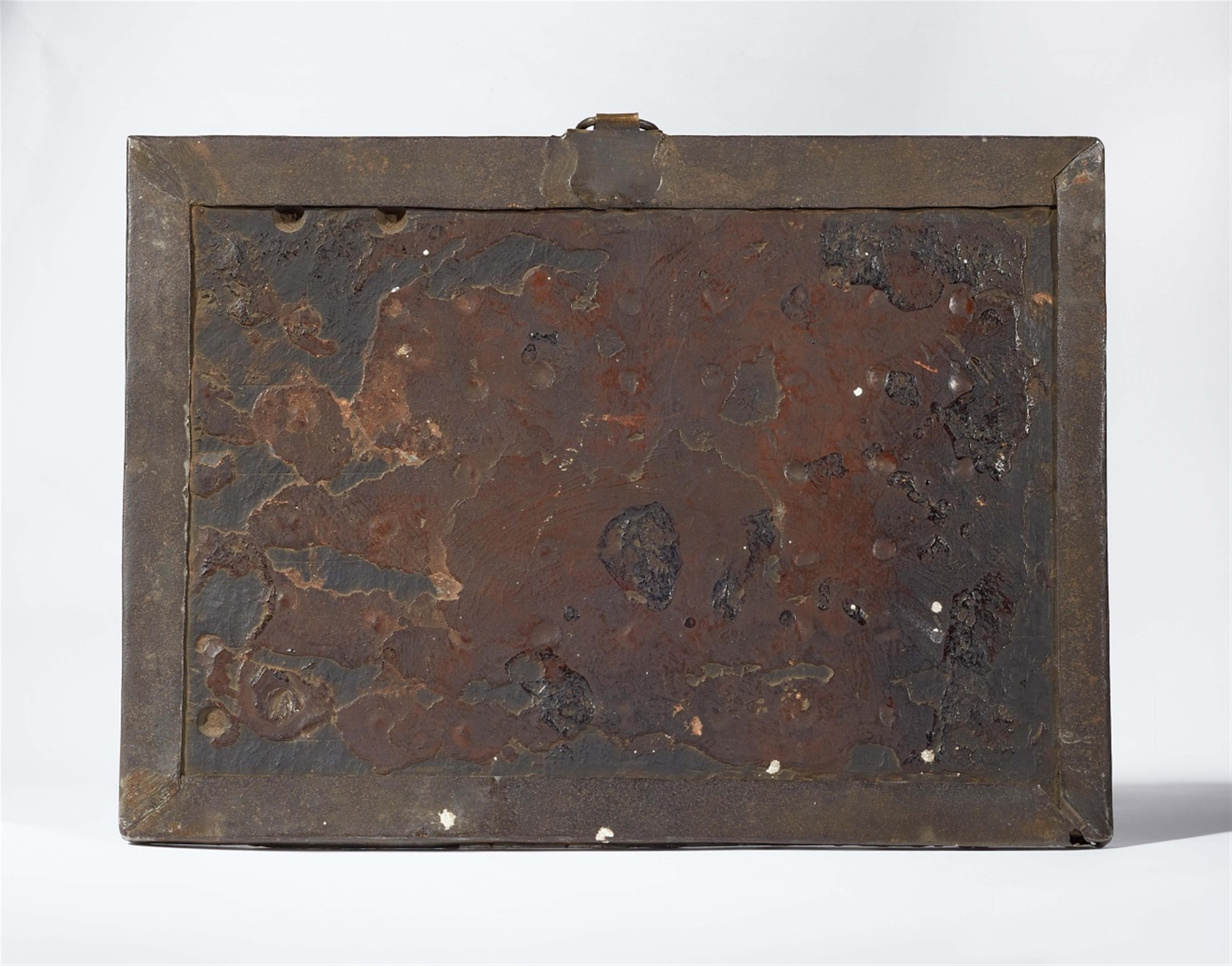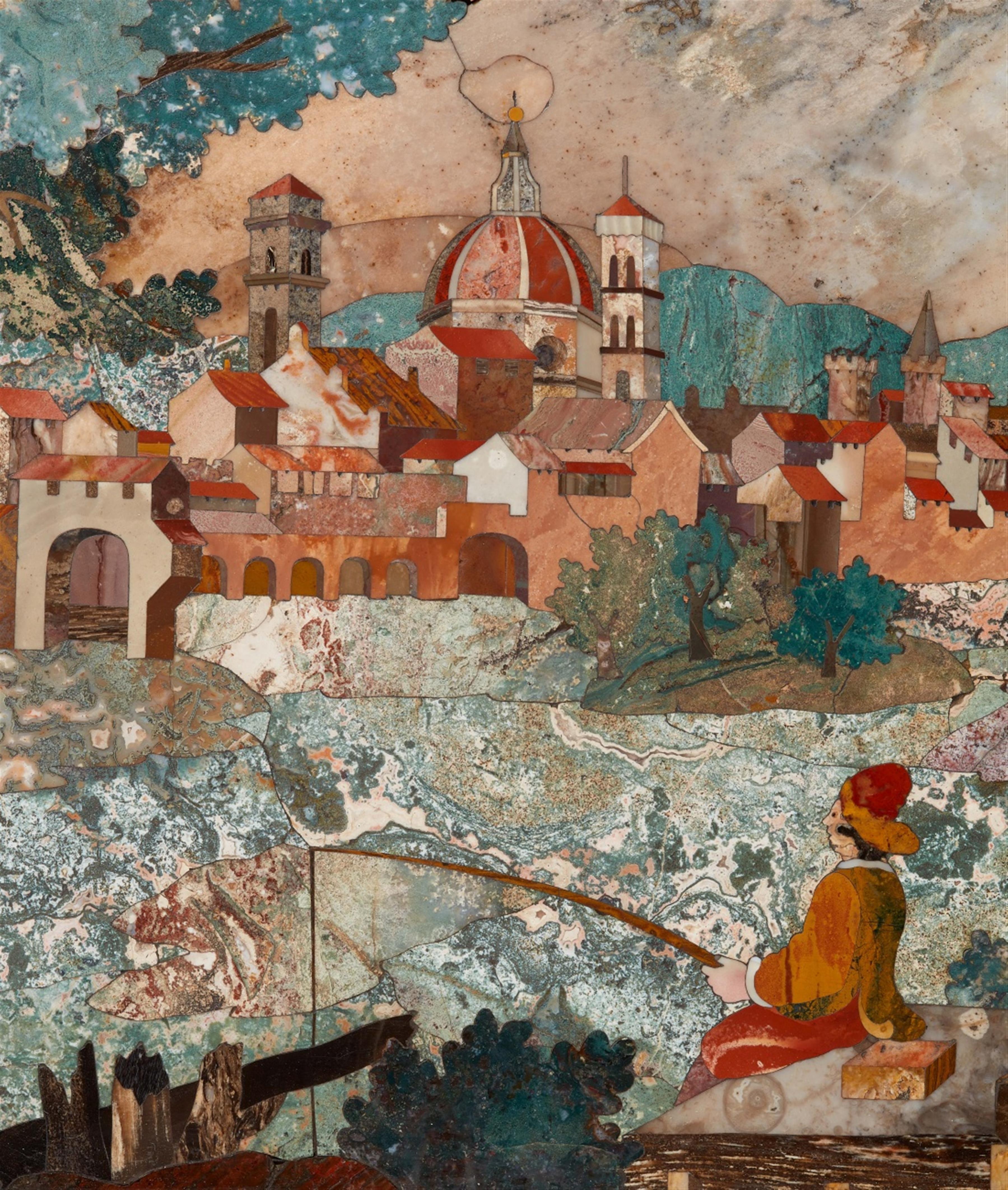An important early commesso panel with a view of Florence
Inlaid with jasper, agate, and chalcedony on a painted slate panel, in leaded iron mountings with soldered repairs. A detailed and colourful stone inlay depiction of an angler by the Arno river with a view of Florence. H with mountings 19.4, W 27 cm.
Cosimo Castrucci, Florence or Prague, c. 1590 - 1600.
In 1592, the Florentine stone carver Cosimo Castrucci was called to the court of Prague. Emperor Rudolph II was a great lover of stone carving, cameos and commesso work. He was an admirer of craftsmanship and, like many of his contemporaries, was also convinced of the healing properties of gemstones. So it is understandable that the Emperor wanted to engage the two greatest masters of their time, Cosimo Castrucci and Ottavio Miseroni, for his personal collection.
The first signed and dated work by Cosimo Castrucci for the Prague Imperial Court is a panel that is now housed in the Kunstkammer of the Kunsthistorisches Museum in Vienna (inv. no. KK 3037). It is a small panel measuring 18.3 x 24.5 cm, proudly signed and dated on the reverse by Cosimo Castrucci. The museum also owns three other panels, including a larger one depicting the sacrifice of Isaac (KK 3411).
The charm of these panels lies, on the one hand, in the bright colours of the selected semi-precious stones and, on the other hand, in the precision of the stone cutting, which is reminiscent of precious jewellery. Castrucci used agates in various colours, bohemian jasper and chalcedony, which are applied to a slate panel, as in larger commesso works. Many researchers have wondered about the prototypes of his designs, and it is believed that he sought his inspiration in the imperial engravings and paintings collection among the works of Pieter Bruegel, Paul Brils, Pieter Stevens and Aegidius Sadler. Because his technique was so different from that used by painters, Castrucci had to emancipate himself from the idea of the copy as an etude. The effect of the stones and their colours was the focus of his designs, not the motif itself. With this special commesso panel, he succeeded in creating an extraordinary work of art, despite the rather contemplative subject and the city scenery in the background, which corresponds in a unique way to courtly representation and splendour.
Following Cosimo Castrucci's death in around 1602, his son Giovanni, who was appointed royal gem cutter in 1610, took over the Prague workshop. From him there exists a legendary commesso panel with a view of Hradcany in Prague, which is also housed in the Vienna Kunstkammer. The Prague court stonecutting workshop probably continued to exist for several years after the death of the emperor in 1612 and was closed at the latest following the death of Ottavio Miseroni in 1624.
Provenance
In Belgian private ownership since 1965.
Literature
For more on Castrucci's workshop, cf.: Giusti, Pietres Dure and the Art of Florentine Inlay, London 2006, p. 117 ff, illus. 93 ff.






